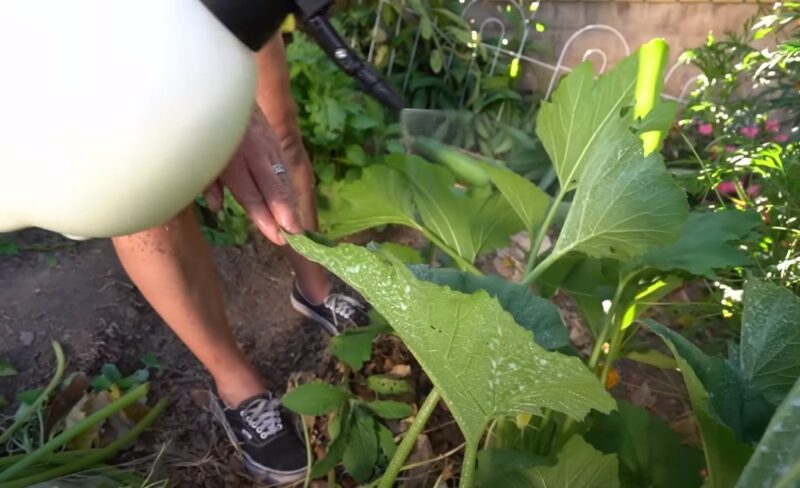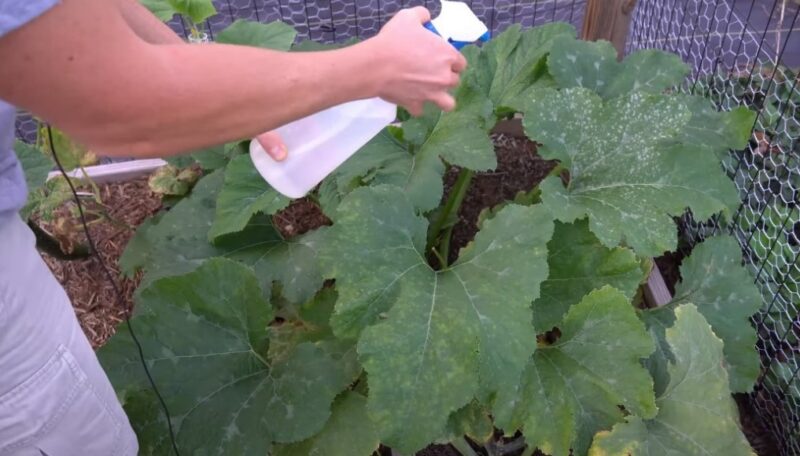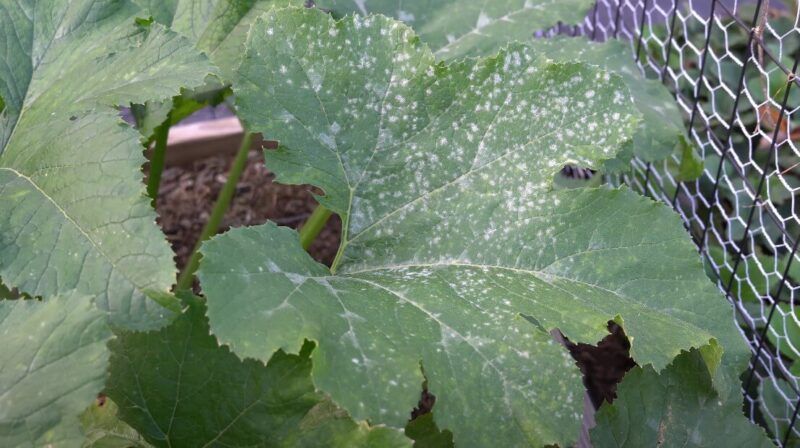Cucumbers are the crisp, refreshing stars of many a summer salad, but nothing ruins the vibe like noticing white spots on the leaves of your beloved plants.
It’s a common problem that even the most seasoned gardeners face. So, what’s going on here, and more importantly, how can you stop it?
| Prevention Tip | Description |
| Sunlight | Ensure 6-10 hours of sunlight daily |
| Proper Spacing | Allow for good air circulation |
| Water at the Base | Keep leaves dry |
| Apply Mulch | Prevent soil spore splashback |
| Prune Infected Material | Reduce the spread of disease |
| Use Neem Oil | Natural fungicide for treatment |
| Plant Resistant Varieties | Choose types like Ashley, Diamondback, Picklebush |
Main Culprit

White spots on cucumber leaves are often caused by powdery mildew, a notorious fungal disease that loves to set up camp in your garden or even greenhouse.
The powdery mildew appears as a white, flour-like dusting on the leaves, which can spread into larger white blotches over time. It doesn’t discriminate; it particularly enjoys munching on young plants and new growth.
Symptoms to Watch For
First, you’ll notice small white spots that look like someone sprinkled flour on your leaves. As the infection progresses, these spots merge, covering larger leaf areas.
If left unchecked, powdery mildew can turn your lush green cucumber plants into a sorry sight, affecting their ability to photosynthesize and ultimately reducing your harvest.
How Does Powdery Mildew Spread?
Powdery mildew gets around quite efficiently. Fungal spores are its mode of travel, hitching rides on the wind, water, or even pollinators. The disease thrives in environments that lack sufficient sunlight and proper air circulation.
So, if your cucumber plants are in a shady, humid spot, they’re basically hosting an all-you-can-eat buffet for powdery mildew.
Ideal Conditions for Powdery Mildew
This fungus isn’t too picky but prefers moderate to high humidity levels (40% to 100%) and temperatures between 60°F and 80°F (15°C to 27°C).
It thrives in shaded, humid environments with fluctuating temperatures. In other words, perfect for powdery mildew, nightmare for your cucumbers.
Prevention Tips
Now, let’s talk about how to stop this fungal freeloading.
- Sunlight is Your Friend: Ensure your cucumber plants get between 6-10 hours of sunlight daily. Powdery mildew hates the sun, so give your plants plenty of exposure.
- Proper Spacing and Air Circulation: Crowded plants create a humid environment where mildew thrives. Space your plants properly to allow for good air circulation.
- Water Wisely: Watering your plants at the base helps keep the leaves dry. Wet leaves are a playground for fungal spores.
- Mulch Magic: Apply mulch around your plants to prevent soil spore splashback. A simple layer of mulch can be a strong barrier against fungal spores.
Treatment Options

Sometimes, despite your best efforts, powdery mildew finds a way. When prevention isn’t enough, it’s time to move to treatment.
Prune and Dispose
Pruning infected leaves and disposing of them properly can help reduce the spread. Don’t just toss them in your compost pile where the spores can continue to thrive.
Neem Oil and Bio-Fungicides
Neem oil is a natural fungicide that can help manage the spread of powdery mildew. Bio-fungicides are also an option, offering a more eco-friendly solution.
Home Remedies
Baking soda solutions and milk-water mixtures are some home remedies that can be effective. These mixtures alter the pH on the leaf surface, creating an environment unsuitable for powdery mildew.
Resistant Varieties

Consider planting disease-resistant cucumber varieties. Options like Ashley, Diamondback, or Picklebush are less likely to succumb to powdery mildew, saving you a lot of hassle.
Regular Inspection and Care
Regularly inspecting your plants and providing consistent care can go a long way. Early detection of powdery mildew means you can treat it before it spreads extensively.
Are Affected Cucumbers Safe to Eat?
The good news is that cucumbers affected by powdery mildew are safe to eat. The fungus doesn’t penetrate the fruit’s interior, so your cucumbers might look a bit spotty on the outside but are still perfectly edible.
FAQs
These spots may start as small patches but can quickly spread and cover large areas.
Final Thoughts
Gardening isn’t for the faint of heart. It’s a battle against the elements, pests, and yes, fungal diseases like powdery mildew.
But with the right prevention and treatment strategies, you can keep your cucumber plants healthy and productive. So, arm yourself with knowledge, get out there, and show that powdery mildew who’s boss!









